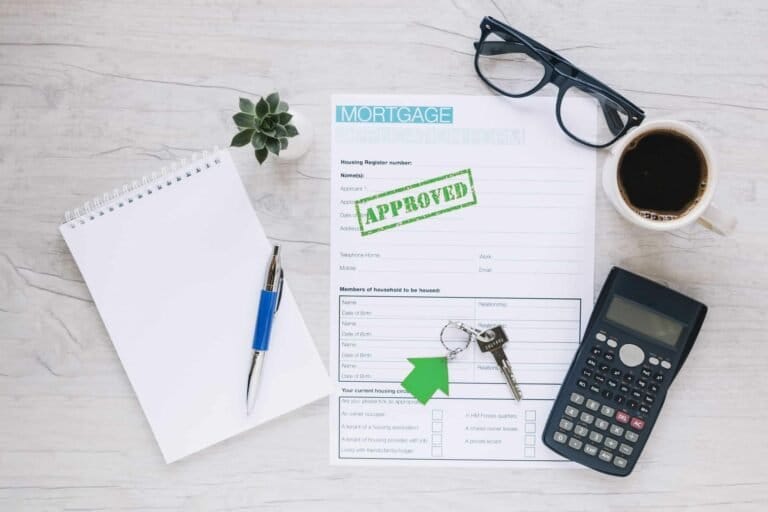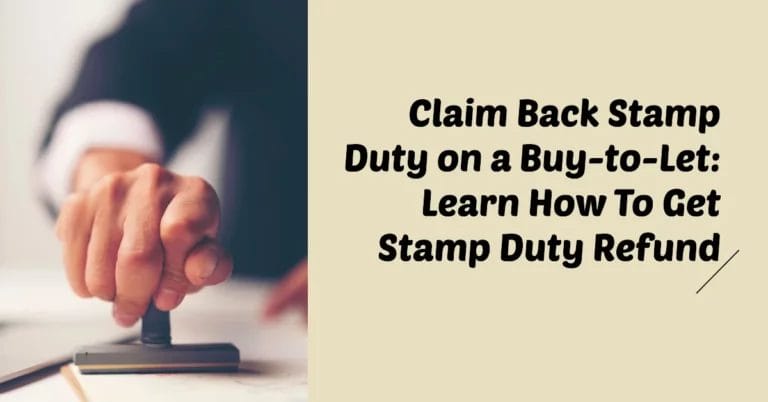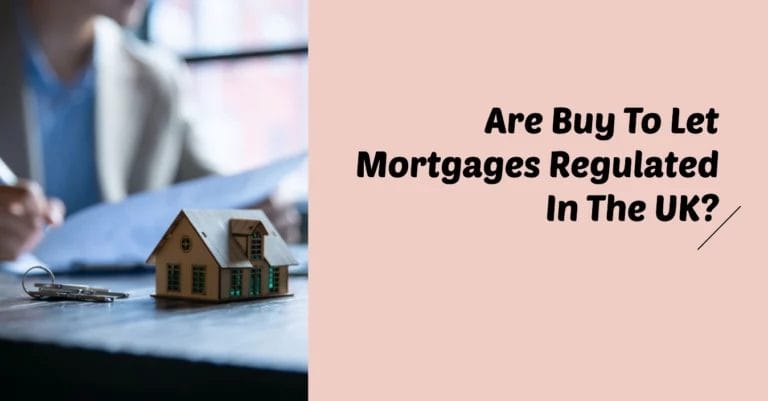Adding Stamp Duty To Your Mortgage: An In-Depth Pros And Cons Guide
Yes, you can, but it increases your loan-to-value ratio (LTV) and accrues interest over the mortgage term. Stamp Duty is payable within 14 days of property purchase. The First-time buyer does not need to pay stamp duty if the property price is below 425000.
Stamp duty to a mortgage is an important decision that could save or cost you thousands in the long run.
Inside this guide, our experts detail the potential benefits and drawbacks of incorporating stamp duty within your mortgage. Learn how it impacts your LTV, overall interest payments, and mortgage affordability. Plus, understanding when adding stamp duty makes sense, and scenarios when covering it separately may be more advisable.
What is stamp duty? A brief explainer
Stamp Duty is a type of tax you pay when buying a property or piece of land in the UK. It has different names depending on where you buy it. In England and Northern Ireland, it’s called ‘Stamp Duty Land Tax’; in Scotland, it’s called ‘Land and Buildings Transaction Tax’; and in Wales, ‘ Land Transaction Tax’.
Essentially, stamp duty is levied on property purchases over a certain threshold. This helps fund public services. But for buyers, it can add a significant upfront cost when completing a home. This is where the option to add stamp duty to your mortgage comes in.
Should you add stamp duty to your mortgage? The pros and cons made simple

Adding stamp duty to your mortgage is an easy way to spread this major purchase cost. However, there are some drawbacks to be aware of.
The main advantages of incorporating stamp duty are:
- Spreads the stamp duty cost over the mortgage term rather than paying upfront.
- Allows you to maximize your deposit amount rather than using savings.
But the potential cons include:
- Pushes up your loan-to-value ratio (LTV).
- This can move you into a higher LTV bracket, meaning higher interest rates.
- You pay extra interest on the stamp duty over 25+ years.
To illustrate this, let’s compare two scenarios – adding stamp duty to the mortgage vs covering separately:
Choice A: Pay Stamp Duty From Savings
Smaller mortgage and deposit required
Lower LTV, so better rate/affordability
But need savings to cover stamp duty
Choice B: Add Stamp Duty to Mortgage
Don’t pay tax upfront
Bigger mortgage and lower deposit
Higher LTV, so potentially worse rates
Extra interest over the years
As you can see, there are good reasons for both options. Our expert brokers will advise what works best based on your situation.
Navigating stamp duty payments in depth
When you’re buying a home, coming up with the stamp duty money within 14 days can be challenging. Here’s an in-depth look at your payment options:
Incorporating stamp duty into your mortgage:
- It is possible to borrow extra on your mortgage to cover the stamp duty bill.
- This increases the loan amount and pushes up your LTV ratio.
- You’ll pay interest on the additional borrowing over the full mortgage term – potentially adding thousands.
- This may move you into a higher LTV bracket, meaning higher interest rates.
- An expert mortgage broker can advise if adding stamp duty makes sense based on the property price and your finances.
Paying stamp duty via credit card:
- You cannot use a personal credit card to cover stamp duty anymore.
- This law changed in 2018 to stop buyers from racking up fees through credit card interest and charges.
- Business credit cards are still permitted, but most people still need them.
Paying in instalments:
- Unfortunately, stamp duty cannot be paid in instalments.
- The full amount must be transferred within 14 days of property completion.
- This lump sum can be tens of thousands for higher-priced homes.
- Having the cash readily available can ensure your purchase is successful.
Estimating your stamp duty costs:
- Stamp duty is charged as a percentage on each bracket of the property price.
- Exact rates depend on whether it’s your main home or an additional property.
- Our online stamp duty calculator provides an estimate based on the purchase price.
- Expert brokers can also manually assess the stamp duty costs and work backwards to determine mortgage affordability and the deposit needed.
Let your dedicated broker handle stamp duty estimates and payments. We’re here to guide you through this complex process!
Demystifying stamp duty rates and thresholds

Stamp duty is a property purchase tax charged as a percentage of the price you pay. The exact rate depends on the property value and your circumstances.
For your main home, stamp duty kicks in:
- Over £250,000 – You pay 5% of the portion above £250k
- Over £925,000 – You pay 10% of the portion above £925k
- Over £1.5 million – You pay 12% of the portion above £1.5m
If buying an additional property, stamp duty starts at:
- Over £250,000 – You pay 8% of the portion above £250k
- Over £925,000 – You pay 13% of the portion above £925k
- Over £1.5 million – You pay 15% of the portion above £1.5m
In essence, you only pay stamp duty on the part of the property price that falls into each tier – not the entire amount.
First-time buyers also get some stamp duty relief on their main home, up to £625k.
FAQs: Adding stamp duty to mortgage
Can first-time buyers add stamp duty to their mortgage?
Yes, first-time buyers can opt to borrow extra to cover their stamp duty costs. However, they may have limited deposit savings, so this would reduce funds even further. Our brokers advise the best approach for each situation.
If I’m moving home, can I use equity from my old house to pay stamp duty?
Yes, you can use your equity to cover stamp duty on your new home. This means borrowing more through your new mortgage. Be aware of how this impacts your loan-to-value ratios on both properties.
Is stamp duty still charged when buying land?
Yes, stamp duty land tax still applies on land purchases. The exact rate depends on whether it is for a residential property build or other use. Additional property rates may also apply.
Do you pay stamp duty on newly built home purchases?
Yes, stamp duty applies on new builds based on the final purchase price. It is charged exactly the same way as on existing resale properties, so new builds do not have any stamp duty exemptions or discounts.
Final takeaway: should you add stamp duty to your mortgage?
When purchasing a property and facing substantial stamp duty land tax or land and buildings transaction tax bills, adding these costs onto your new mortgage may seem convenient. However, be aware this increases your total borrowing, loan-to-value ratio, interest rates, and monthly repayments.
While amortizing stamp duty over 25+ years reduces upfront costs, you pay more in the long term through compound interest charges. So incorporating it comes at an additional price over time. Before deciding, consider:
- How much extra interest will you pay on the stamp duty portion over the full mortgage term?
- Could pushing up your LTV ratio move you into a higher bracket, impacting rates/affordability?
- Do you have adequate savings to cover the stamp duty bill separately?
Carefully weighing up these key factors is essential. Our expert mortgage advisers will discuss your stamp duty payment options during your consultation. We’ll clarify the financial implications to help determine if adding it to your new mortgage makes sense or if funding it separately is the more prudent approach.






